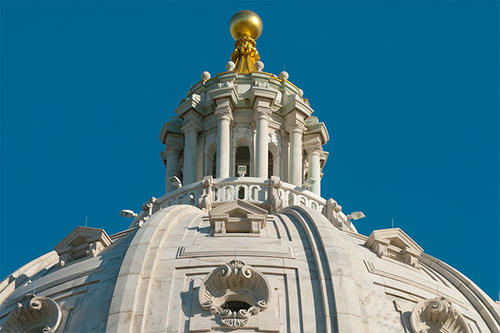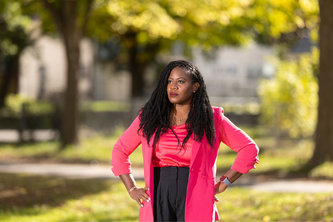President Kaler: Governor’s bonding recommendations reinforce U’s importance to Minnesota

Today, University of Minnesota President Eric Kaler called Governor Mark Dayton’s bonding proposal for the University “a very positive starting position” for the 2016 legislative session – including funding for four projects – that demonstrates the Governor’s continued recognition of the institution’s impact throughout Minnesota. Watch a short video about the University of Minnesota’s priority capital investment projects.
"I’m grateful Governor Dayton supports systemwide facility investments for our students," said Kaler. "We look forward to building on our partnership with the Governor and legislators. The vitality of Minnesota is inextricably linked to the upward trajectory of the state’s flagship public research university—the University’s economic and cultural impact spans all 87 counties of Minnesota.” See a map of the University’s statewide impact here.
The University is requesting $236.30 million in this year’s bonding bill for six priority projects that will renovate facilities and provide students access to 21st century learning tools. Governor Dayton’s recommendation provides $153.30 million of that request, including full funding for three of the projects:
- $27.20 million in funding for the Chemistry and Advanced Materials Science Building, a 51,000-square-foot science and engineering building on the U of M Duluth campus. The facility will include flexible wet and dry labs, modern utilities, environmental controls and safety accommodations to support all STEM programs at U of M Duluth, creating rich learning opportunities that the UMD’s current chemistry building (almost 70 years old) is not able to support. The University will invest $13.60 million for this project.
- $66.70 million in funding to create a new Health Sciences Education Facility for the University’s Academic Health Center on the Twin Cities campus to support interdisciplinary team-based learning and care. The project will replace over 100,000 square feet of outdated facilities that do not support fundamental changes under way in the education and training of today’s health care professionals. The University will invest $33.40 million for this project.
- $4.40 million in funding to build a Plant Growth Research Facility on the Twin Cities campus to protect the University's rare-plants collection and provide hands-on learning opportunities for Minnesota's future plant geneticists, growers, and agriculture and environmental scientists. The current facility, built in 1974, is deteriorating and does not provide appropriate space for the critical hands-on research and teaching. The University will invest $2.20 million for this project.
Governor Dayton’s recommendation also includes $55 million in funding for the University’s Higher Education Asset Preservation and Replacement (HEAPR) request. HEAPR funding is the University’s top priority request.
“We are committed to being responsible stewards of public resources,” said Kaler. “Forty-three percent of U of M buildings are more than 50 years old. These critical maintenance funds bring aging buildings up to code, ensure energy efficiency and enable us to prepare students for successful careers in the 21st century.” The University has requested a total of $100 million from the Legislature to fund HEAPR projects.
Two additional projects are included in the University’s 2016 request. The University is requesting $16 million to fund Academic and Student Experience Investments, used to convert obsolete spaces on the Crookston, Duluth, Morris and Twin Cities campuses into modern spaces to meet the needs of today's programming and provide new learning opportunities across Minnesota. The University will invest $8 million for this project.
Additionally, the University is requesting $22 million to support a renovation of Pillsbury Hall. The funding requested will renovate the building’s obsolete science facilities into modern teaching, learning and research spaces to serve over 6,000 students studying humanities programs. The University will invest $11 million for this project.
“All six projects are essential to keeping the state at the forefront of emerging knowledge and educating the professionals and leaders of tomorrow,” said President Kaler. “By funding these projects, we will ensure that students across Minnesota are prepared to solve the complex challenges they’ll face in their future careers.”
U leaders, faculty, alumni, community leaders and students will continue to make their case at the Legislature to fully fund the University’s 2016 capital request and supplemental budget request.
Find out more about the University’s 2016 capital requests at govrelations.umn.edu/capital-request.html.
- Categories:
- Campus Affairs





